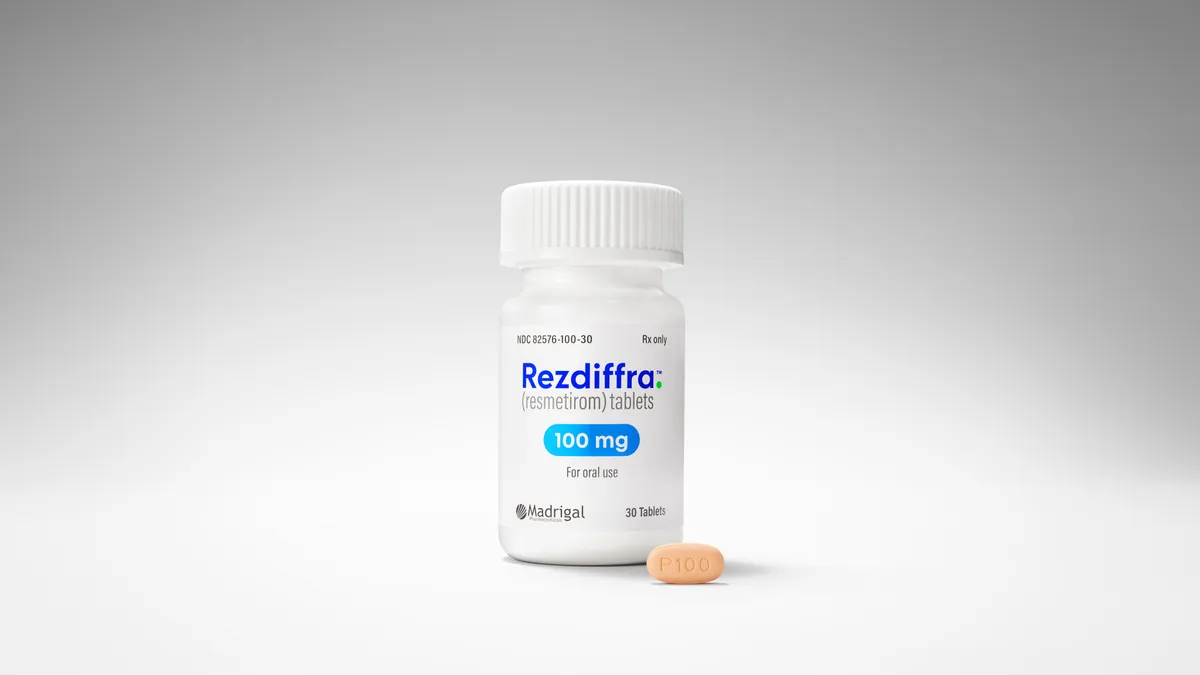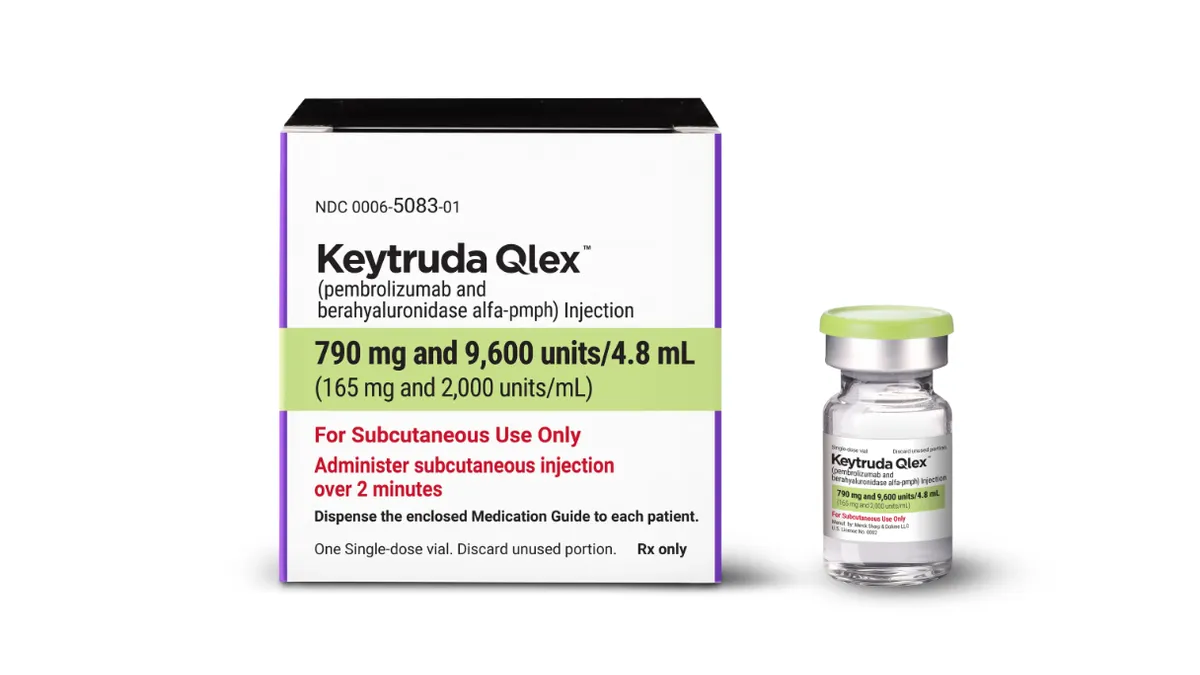Doctors have long had access to tests that can help them diagnose patients and choose doses that would be the most effective and carry the fewest risks for serious adverse events.
But for more than a decade, the promise of pharmacogenomics (PGx), which can also be used to speed drug development by identifying the patients most likely to respond to the treatment, has gone largely unrealized.
There are a number of reasons why: from poor usability, to a lack of outcome data, to limited reimbursement for testing, says Dr. Bernard Esquivel, chief medical officer of GenXys Health Care Systems, a Vancouver-based company that specializes in precision prescribing solutions with embedded pharmacogenomics. The pharma industry has largely been biding its time waiting for PGx to mature before jumping in, he says.
That may soon change. Federal legislation aimed at removing some of the barriers to PGx may help give it a needed push toward mainstream use.
In February, U.S. House representatives introduced a bill called the Right Drug Dose Now Act. If approved, the bill would encourage PGx use by educating doctors and patients about the benefits of PGx tests, improving electronic health records for pharmacogenomic information and authorizing funding to support PGx implementation research.
At the same time, federal regulators have been setting the stage for broader PGx implementation by standardizing pharmacogenomic information. The FDA has created a table listing pharmacogenomic information on over 200 medications to assist doctors in prescribing and the National Institutes of Health has a number of PGx initiatives, including building the Clinical Genome Resource, a central clinical resource to better enable precision medicine.
“I think [it] is the right time for the pharma industry to look back and see how they can actually use [PGx],” Esquivel says.
The growth of personalized medicine
An individual’s response to a drug can be highly variable due to genetic differences that affect drug-metabolizing enzymes in the body — which is where PGx testing can come in. Take, for example, codeine. One patient might metabolize the drug so slowly that it has no effect on pain, while another could absorb it so rapidly that they can overdose on the same amount. PGx tests identify those differences ahead of time before a problem arises.
When implemented, PGx testing can prevent dangerous drug-related adverse events, which ring up some $30.1 billion in direct and indirect healthcare costs each year, and are the fourth leading cause of death in the U.S., Esquivel says. Patients also don’t have to go through a frustrating trial-and-error process to find the best medication to treat their condition.
PGx tests are available for a number of medications, including certain blood thinners, antidepressants, statins, autoimmune drugs and some cancer drugs. Individual tests typically cost around $300 in the U.S., Esquivel says.
Putting tests into use
But PGx tests aren’t a magic tool, Esquivel points out. They’re more appropriately used alongside other clinical information, such as the patient’s age, weight, sex and liver or kidney function when a doctor is making prescribing decisions.
And it’s these complexities that have made it difficult for doctors to incorporate the tests into everyday medical practice, Esquivel says. A PGx test often results in a complicated, bulky report that’s difficult to digest and apply.
“We’re talking about a 35- or 45-page report that isn’t suitable for the way we practice medicine nowadays,” he says. To broaden their use, Esquivel says there needs to be a better way to give doctors access to this information.
“We believe that the best way we can deliver this information is via a clinical decision support system,” he says.
Adding PGx into the electronic health system, as would be encouraged by the Right Drug Dose Now Act, might help doctors quickly and easily consider PGx test information when making prescribing decisions. Currently, many electronic health systems do not include or alert healthcare providers of relevant PGx information.
Financial incentives for use
Some of the reluctance to use PGx testing also stems from the limited reimbursement available for these tests. At least one insurance company, United Healthcare, covers PGx testing for major depressive disorder and anxiety conditions that haven’t responded to the first line of treatment, says Esquivel. But other companies don’t cover this testing at all. Medicare and Medicaid will reimburse for some PGx tests if a person meets specific criteria. That may change in the future, and if it does, PGx could offer a way to save on healthcare costs.
Some $528 billion is wasted annually on medications that aren’t the best match for the patient. This number amounted to 16% of U.S. healthcare expenditures in 2016. Even if PGx testing only reduced drug-related adverse event costs a small percentage, it could still result in large cost savings, Esquivel says.
The pharma industry too, stands to benefit financially from broader use of PGx testing. Narrowing the field to the people who are most likely to benefit from a drug in early-stage trials can improve safety and speed drug development. It can also weed out people who might experience a serious medication-related adverse event, which can derail the drug approval process.
“And that represents billions of dollars in savings for the pharma industry,” he says.
Despite these potential benefits, uptake of PGx in pharma has been slow. According to a report published last year in Human Genetics, major pharma companies “routinely” conduct PGx testing, but complexities around the design of studies and global regulations have hampered widespread implementation of PGx in drug development.
For now, the market of PGx solutions providers is still geared towards healthcare clinicians. But there are some signs that changes are underway.
For example, in a recent earnings report, Tonix Pharmaceuticals said it is using PGx testing to compare participant populations between two studies and could use the results to develop a diagnostics test for one of its lead candidates.
Pharma companies may also face legal challenges if they don’t use PGx data in some cases. In 2021, a judge ordered Bristol Myers Squibb and its subsidiaries to pay the state of Hawaii $834 million because it neglected to warn patients in its marketing that its blood-thinning drug, Plavix, might not work as well — or at all — in some patients, particularly those of East Asian and Pacific Island ancestry.
These various factors could give PGx testing the push it needs to bring it into regular use, which is something Esquivel says would improve care for patients.
Up to half of all patients with mental illness don’t respond as desired to the first psychiatric medication prescribed, leading to a time-consuming and draining process of trying new medications to find the right match. Knowing what the best drug might be up front can save time, money, and ultimately lead to better quality care.
It’s hoped that the Right Drug Dose Now Act will lay some of the groundwork needed for that to happen. The House Energy and Commerce committee has yet to act on the bill and it remains currently unclear what next steps could look like for the legislation. But if it eventually passes both House and Senate approval, Esquivel says it will help to standardize access to PGx.
“It’s a first solid step to get the ball rolling,” he says.


















